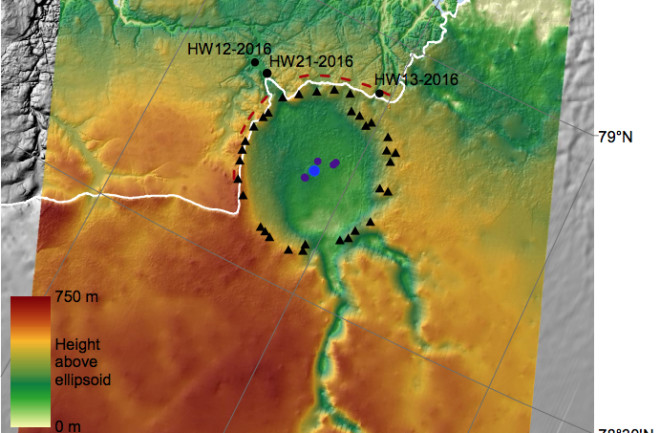Most of Earth’s surface has been plotted, mapped and measured. And along the way, scientists have turned up a plethora of craters big and small. But there was always one major crater missing.
12,800 years ago, during the Pleistocene, Earth was warming up from its last Ice Age. Temperatures slowly rose while glaciers retreated, that is, until something major happened that triggered a cold snap big enough to leave its mark on the geologic record. Over the course of just decades – the blink of an eye in geological timescales – the planet cooled somewhere between 3 and 11 degrees Fahrenheit (2 to 6 degrees Celsius). The resulting period is known as the Younger Dryas, a mysterious 1000-year blip in history.
Many scientists have suggested – with evidence – that the Younger Dryas was triggered by a meteorite impact. But others have held out, suggesting that volcanic eruptions or, what seems to be the leading favorite, some sort of massive freshwater flood temporarily disrupted climate cycles based out of the North Atlantic. But the main reason scientists have been slow to accept the impact hypothesis is simple: There’s just no crater.
But research out today in the open-access journal Science Advances suggests that maybe we haven’t looked everywhere. The work, led by Kurt Kjær, professor at the Natural History Museum of Denmark and University of Copenhagen, describes a previously overlooked, 19-mile-wide crater that’s been hiding in plain sight in northwest Greenland’s Hiawatha Glacier. In fact, it’s only about 150 miles from Thule Air Base – the U.S.’s northernmost Air Force base and the place where NASA’s IceBridge planes took flight. You can see about a third of the crater’s rounded outline on Google Earth.
Could this be the sought-after Younger Dryas crater? That depends on how old it is, but it hasn’t been precisely dated yet. Right now, the researchers can only confidently say it’s between 3 million and 12,000 years old – definitely from the Pleistocene.

